After riding mountain bikes for many years now I have tried several different brands and types. In researching these purchases, I came across the common types, questions and problems that most mountain bikers had when it came to Mountain Bike pedals. These were,
- Common Types
- Clipless
- Flats
- Common Questions
- How do I choose the right Mountain Bike pedals for my bike?
- Are Mountain Bike pedals Universal?
- Are Mountain Bike pedals Reverse threaded?
- Common Problems
- Cross threaded cranks
- Worn out studs
- Loose or Sticky Clipless pedals
Common Types of Mountain Bike Pedals.
In the world of mountain biking, there are two types of pedals on the market that riders have to choose from; Clipless and Flats. The school of thought changes from time to time as to which true mountain bikers use.
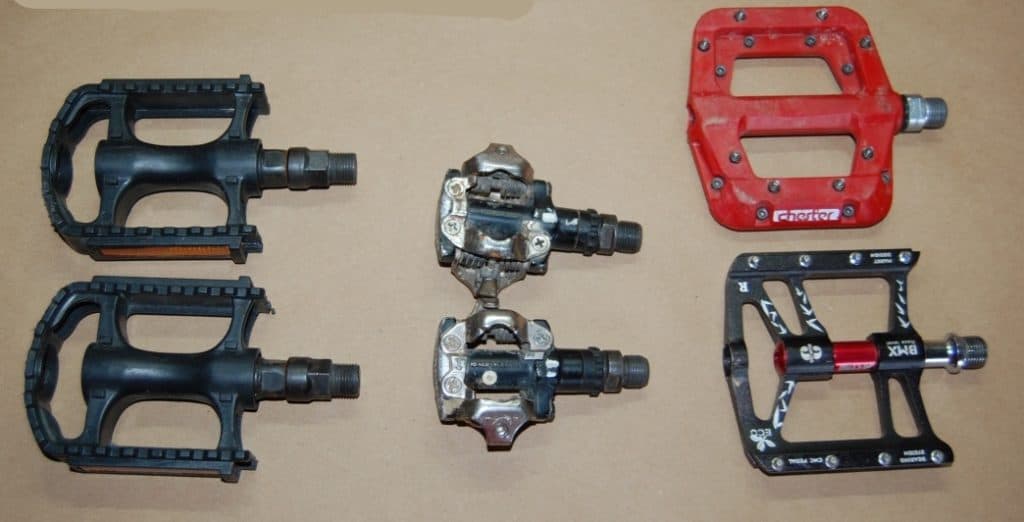
When I started off with my Mongoose Alta back in 05′, I simply rode on the cruddy flats that came with the bike. Later there was a push for riding clipless pedals for better performance.
Common Questions about Mountain Bike Pedals.
In researching for the blog post I came across several common questions surrounding mountain bike pedals that are splattered on various forums.
This is my effort to help answer some of these questions to help out beginner mountain bikers when it comes to purchasing their next set of pedals.
How do I choose the right Mountain Bike pedals for my bike?
Choosing the right mountain bike pedals comes down to the rider’s comfort level as well as the type of riding they are looking to do.
While it is easier to test out and get a feel for flats, I recommend that riders at least test out the clipless pedals and shoes to ensure they find what ultimately feels the best for them.
Riding Clipless Mountain Bike Pedals
Riding clipless pedals allow mountain bikers the ability to get power out of the full stroke effectively getting the most power possible when pedaling.
This is really beneficial on long inclines allowing you optimal performance and saving your energy.
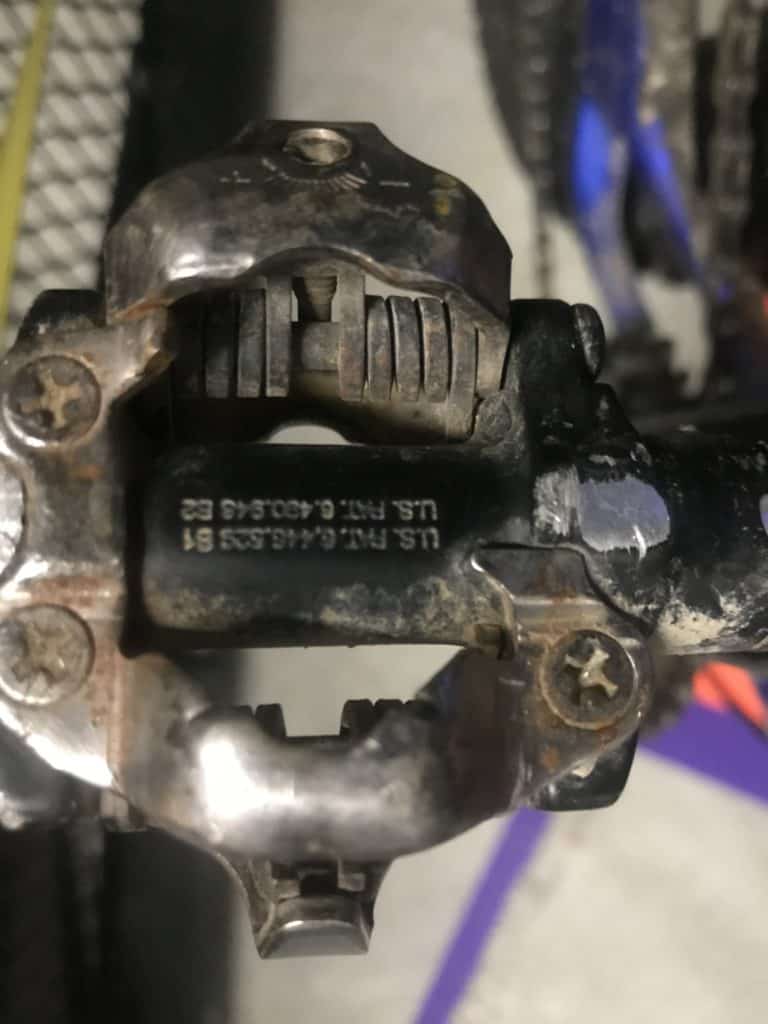
This is also beneficial in very technical sections like rock gardens where the constant impact could force your feet to come off of the flats.
However, some feel confined with being clipped into the pedal which can lead to crashes due to lack of confidence in coming unclipped when needed.
Riding Mountain Bike Flat pedals
Riding on flats allow mountain bike riders more freedom in the ride. It allows them the ability to quickly pop a foot out in a fast turn to prevent crashing.
It also helps take away the anxious/nervousness one might feel by being confined in the clipless.
While some will say that you lose power if you aren’t clipped in, I believe that having the right flat pedals limits how much of that power is actually lost.
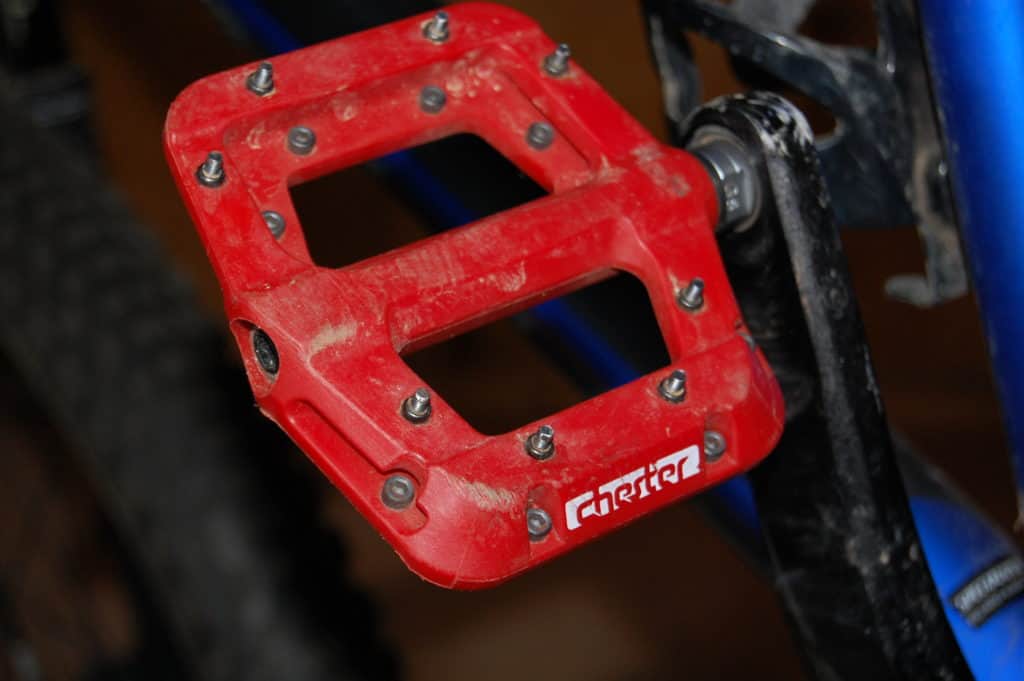
Are Mountain Bike pedals universal?
Mountain bike pedals are standard than universal. I say this because most of the pedals you purchase today are all in the same size.
In today’s market many if not all of the pedals you will be looking at (like these Race Face Chester I bought from Jenson USA) are all a standard 9/16th and would work on most cranksets.
If your bike has a solid one-piece crankset you may end up needing 1/2″ set of pedals.
The other aspect to think about here is that you can’t simply purchase a pair of clipless pedals and go riding. You also have to find a compatible pair of mountain bike shoes that can mate with the pedal you purchase.
Are Mountain Bike pedals reverse threaded?
The term reverse threaded means that it goes counterclockwise. The old phrase “Right-Tighty” or “Time is Right” refers to how one would tighten bolts. In regards to mountain bike pedals, the left pedal or non-drive side needs to be reversely threaded in order to prevent the rider from spinning the pedal right off the crank.
The right pedal or drive side is your standard threading. In order to remove the drive side (right side pedal) simply grab and stabilize the pedal with one hand while using the other had to loosen the pedal with a counter-clockwise motion.
Common Problems
Cross threaded pedals on either flats or clipless
This is probably one of the easiest problems that a mountain biker can accidentally cause as well as prevented. I personally ran into this issue when rushing to pack up and prepare my bike for a ride.
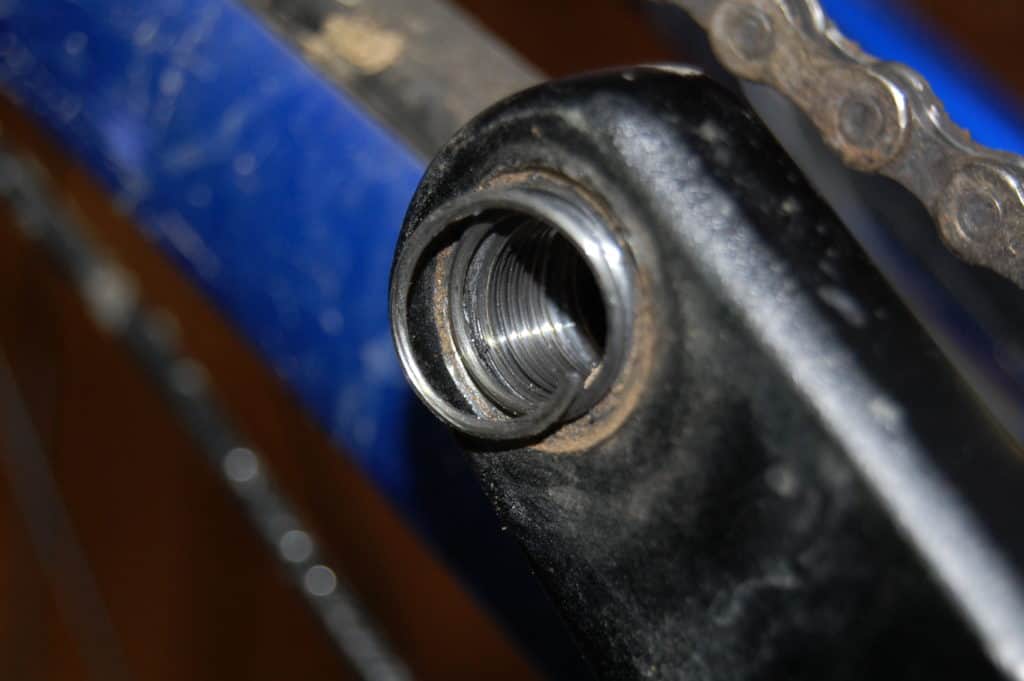
The morning of the ride I rushed putting on a new set of flats swapping out my old clipless pedals and unknowingly cross-threaded damaging the crank arm. Unfortunately, I didn’t realize that I had this problem until the end of the ride.
On the way out of the trail, I noticed that the non-drive was really wobbly. Much to my dismay, after placing my bike on the rack that the threads in the crank were almost completely.
In some situations, you may end up needing to purchase new cranks but there are other options. Check out my article on Common Crank Arm problems on how to resolve that issue.
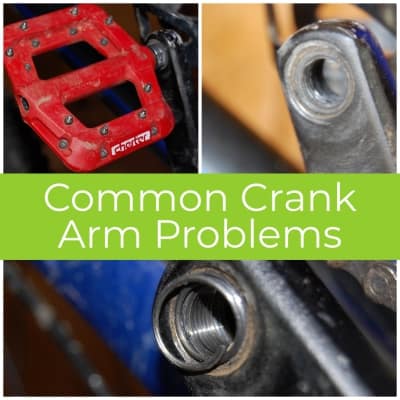
Worn out studs on flats
If your riding on a good set of flats with pins they are more than likely replaceable. The pins wear out for a number of reasons from normal wear and tear as well as rock strikes out on the trail.
These are simple enough to replace with an Allen key and could benefit from having some Loctite.
Loose or Sticky clipless pedals
There are several settings on your clipless pedals and shoes that allow the mountain bike the ability to tighten or loosen the pedals for ultimate comfort.
The key is to have enough flexibility to allow you to quickly pop your shoe out in the event of a fall or crash so you can prevent injury.
You don’t want your binding to be so loose that you feel like you are in flats and lose the benefits of being in clipless, to begin with.
Other common questions and problems
Why don’t all Mountain Bikes come with pedals?
While the lower end mountain bikes do come with pedals they come with a pair of cheap pedals. The higher-end bikes also focus more on other components of the bike because they know that the pedals are rider specific.
Where one rider might be comfortable with clipless others might prefer only flats. Riders are also fiercely brand loyal.
When researching pedals when I was looking to upgrade I found this to be a common trait for most. For more information and detail check out our post on Why don’t Mountain Bikes come with pedals? Reasons, Types, and Options
Why don’t Mountain Bikes Mudguards come standard?
While I am not a proponent of riding on wet trails, sometimes you come across a mostly dry trail with a section or two of dampness. That, or you have a section of trail with a creek crossing.
So why don’t mountain bikes come with mudguards? While mountain bike mudguards are fairly inexpensive, they are typically rider specific in that they come in various styles, shapes, and sizes.
Instead of having your local bike shop add it onto your new ride if you are buying one, purchase a set online and try to install them yourself first. If you want to learn more about mountain bike mudguards, check out our article here where we go into the reasons in more detail as well as aftermarket and DIY options.
Either way, I can’t stop recommending them enough. It took me a while to jump on the bandwagon but I am so glad I had put them on my wish list for Christmas last year.

